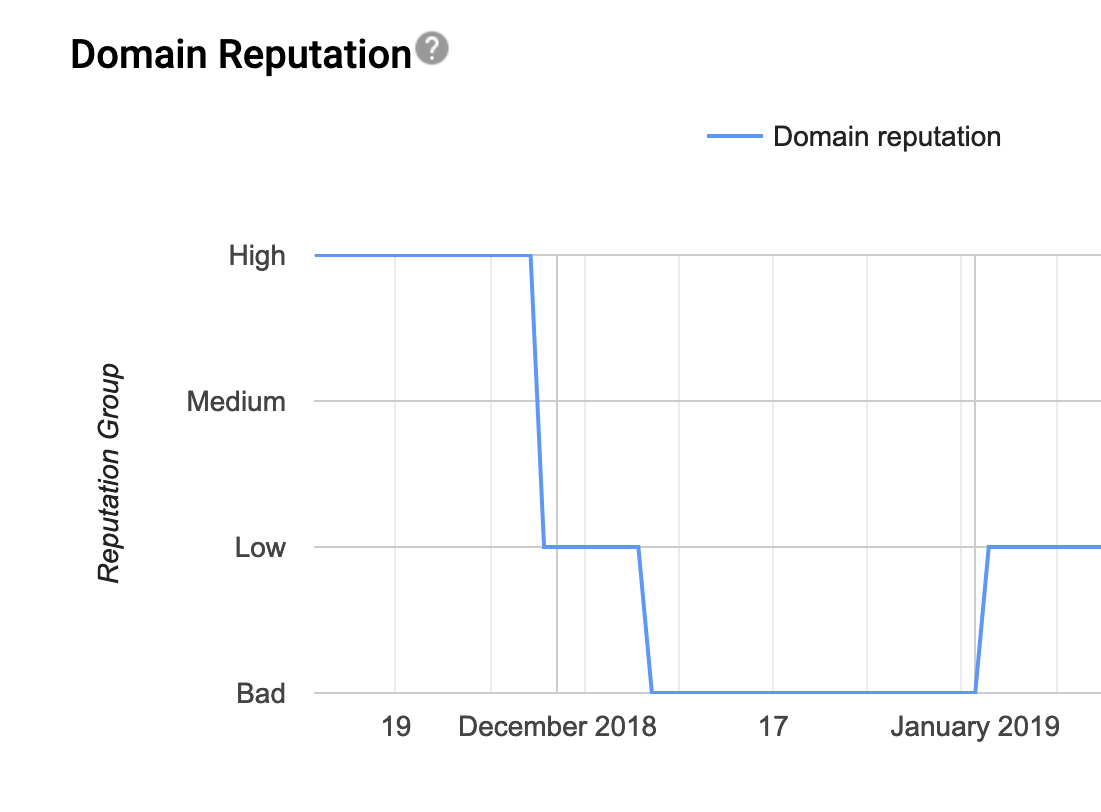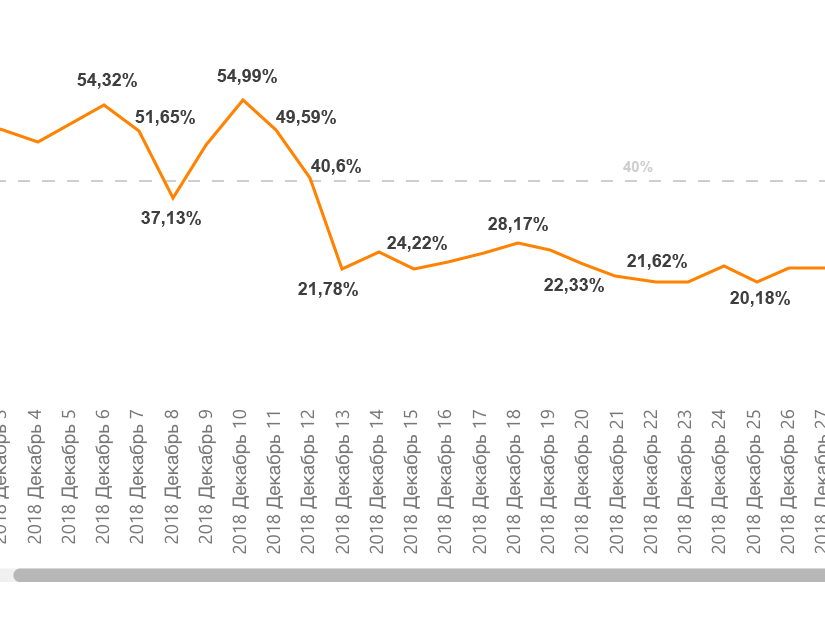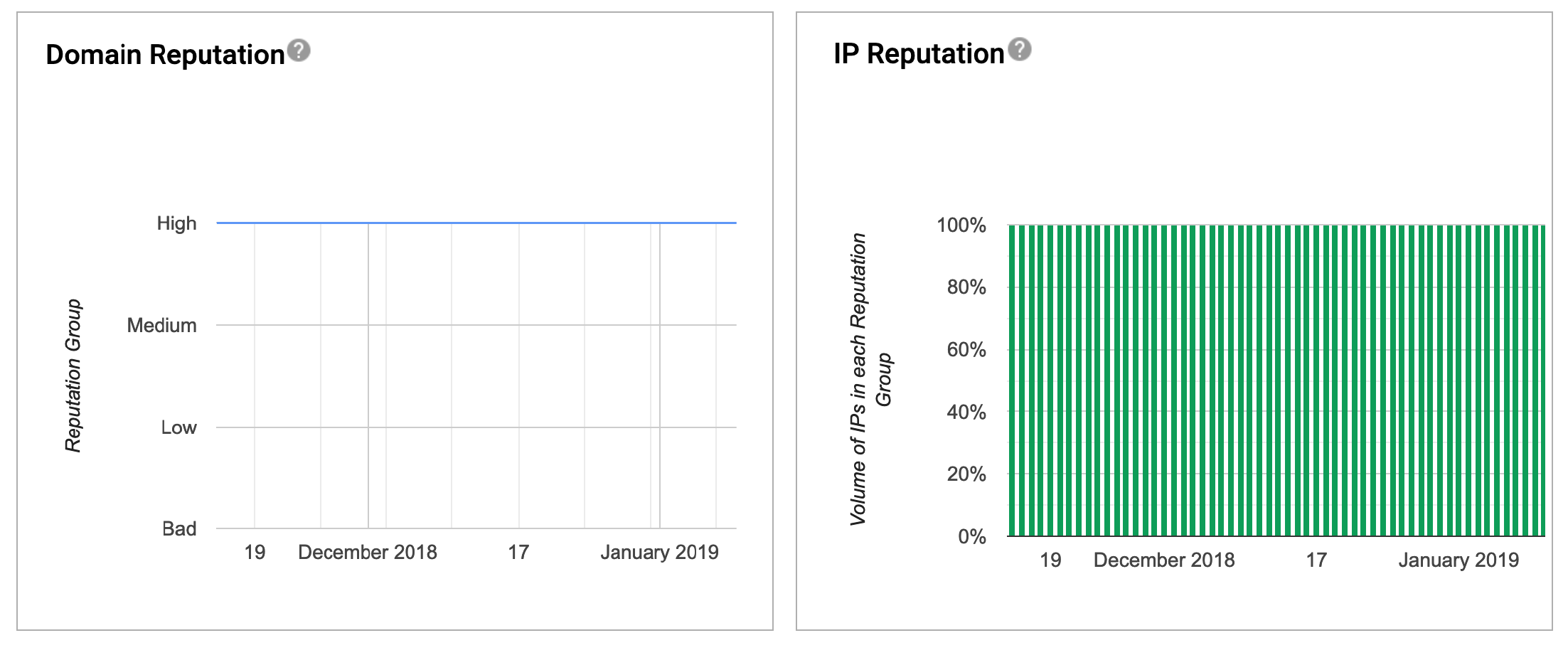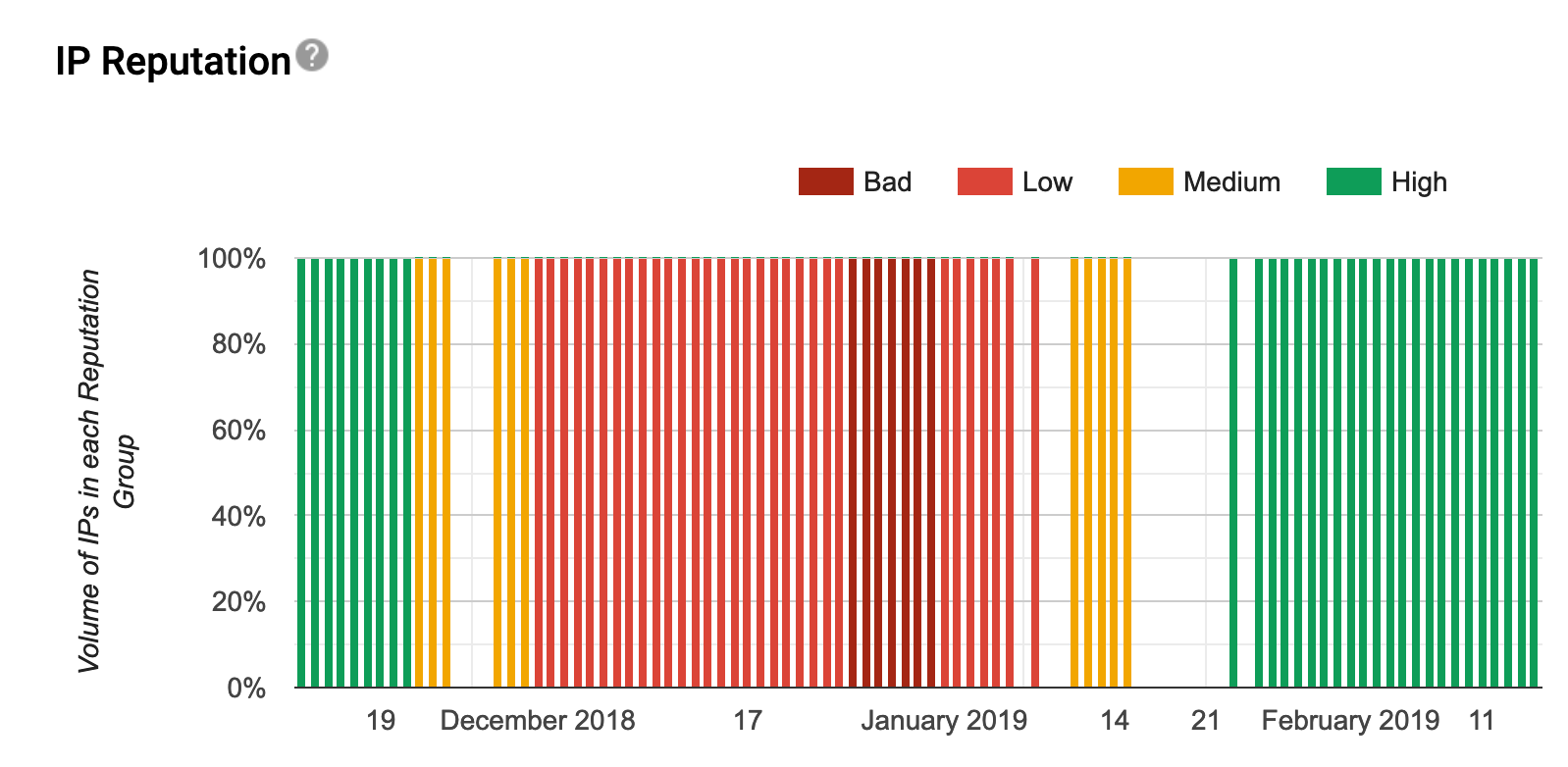“In November 2018, we mistakenly fell into spam on all fronts.” How I saved mailings from a company with a millionth base

“Until Black Friday 2018, everything was fine. And then ... 2 months of sleepless nights, finding solutions and testing hypotheses. ” Email marketer Ivan Ovoshchnikov told us how to save a mailing list with a million subscribers, which for technical reasons fell into spam.

Hi, I’m Vanya, an email marketer at DreamTeam. I’ll tell you how, after Black Friday, I got out of spam a newsletter with a millionth base.
It all started with this:

Screenshot from Google Postmaster. Since the end of November, the IP reputation collapsed and all letters began to fall into spam.

The same thing happened with the reputation of the domain
. I tell you why it all happened and how we solved the problem.
Company introduction
DreamTeam is an international gaming platform. Hundreds of thousands of gamers find partners for teams here (for example, on CS: GO or Apex Legends), develop gaming skills and earn money on e-sports.
- Geography: world. More precisely: Europe, USA, Canada, Australia, CIS.
- Base: ≈ 1,200,000 subscribers.
- Field: eSports.
- For mailing we use 3 services, 4 IP addresses, 2 main domains and 2 subdomains.
Why so many services and IP addresses?
All services and domains are needed for different purposes:
- We use one service for newsletters for content and trigger emails. We send through 2 subdomains and a common IP address.
- The second service is used for transactional and service letters. We send through a separate domain and a dedicated IP address.
- We use the third service for newsletters about cryptocurrency to a warm base. Filters of email providers do not really like this topic and often send cryptocurrency letters to spam. But we have everything in order with the newsletters: the database was collected through the subscription form, and in the letters there is the opportunity to unsubscribe. A separate service and IP address are needed for security.
Types of Newsletters
We send 4 types of mailings:
- Content newsletters about games. For example, platform updates and e-sports news
- Trigger letters. An example of a trigger: a user has not visited the platform for a month, we send him an email with a reminder about us.
- Transactional letters: payments, order statuses, etc.
- Cryptocurrency Content Letters. Reports on what work we did, where and what publications about our cryptocurrency were.

Sample Email
In November 2018, we fell in spam on all fronts
Content and trigger subdomains and IP first
We spent aggressively on Black Friday: we sent 7 mailings to the entire base. They sent an offer to buy our premium subscription at a great discount. Everywhere the same sentence, but in different words. Plus they said how much time was left until the end of the action.
Subdomain and IP were warmed up - their reputation did not suffer much: there

was a high reputation, it became average. Not Critical.
Immediately after Black Friday, I decided to connect a new series of triggers. Used a common IP with a subdomain for content mailing.
In the mailing list service (I’ll say right away, not UniSender), the subscribers were on different lists. In each of these lists, you can create segments (for example, by country of residence). I selected the desired segment and added it to the automation. But due to a technical malfunction, all the contacts from the list got there.We sent 20 times more letters than we should.
I contacted technical support and solved the problem. But the letters have already left, and this affected the reputation:

Domain and IP reputation fell to very low.
The technical support of the service simply solved the problem. What happened was not explained.
Cryptocurrency Newsletters Next Get Into Spam
I’ll start right away with a screenshot of the IP

Reputation : The reputation of newsletters and cryptocurrency fell to very low at the end of November.
Reputation worsened on December 1. But everything is simple here - we bought 2 allocated IP addresses and, as it turned out, our mailing list service did not warm them up (or did it poorly).
Service and transactional letters fell last
In mid-December, Google simply decided that spam was often sent from our domain. This is noticeable in the sharp decline in openness:

The openness of service and transactional letters fell more than 2 times
. Nevertheless, the reputation of the domain and IP was at an excellent level.

Newsletters fell into spam despite the excellent reputation of the domain and IP
How they decided and how much time they spent
Let's go from simple to complex.
Transactional and service letters
They did nothing. Seriously, just waiting. As a result, after 2 weeks, the openability indicators leveled off and everything became good again. Charged to the "quirks" of Google.

Cryptocurrency Newsletters
Warmed up a new IP-address, sending letters only to a warm audience. As a result, already the second mailing from a new IP address gave a high openability rate.

Results in UniSender. Already the second mailing from the new IP gave 41% of the discoveries. The
warm audience in our case is investors. They invested their money in our project, so they are happy to read our reports in letters.
How to warm up the IP. I increased the number of emails sent by 10% daily, starting from 2000. This method is described in detail in my article on domain warming up on the UniSender blog. In short, I will distinguish 3 ways of warming up: safe and slow, fast and risky, and average in speed and risk. This method is safe.
Triggers and content feeds
Here, they also wanted to connect a specialist and buy a new IP address with a new subdomain, but ...
The solution was simple - it was necessary to warm up the old subdomains and IP address. I had a hypothesis that this might work, and it worked. Subdomains and IP were heated in the same safe way.
As a result, we took all the users who opened at least 1 of the Black Friday letters and conducted 2 content mailings. The first mailing went from the subdomain for content, the other from the subdomain for triggers.
After these 2 mailings, we got a high reputation for subdomains and IP addresses. We returned to the previous volumes and continued mailing.

Thanks to warming up, IP reputation has gradually improved.

The same thing happened with domain reputation.
This is what happens if you send too many letters through the database. But even such a seemingly hopeless situation was solved.
From this whole situation I made 3 conclusions.
Test triggers. Before starting new automatic triggers (for example, segmentation by country, as in my example), it was necessary to test the number of people to whom they will be sent. To do this, in automation it was necessary to add the option “wait 1 day (you can have a little less)”, see how many people will get into automation and then either connect letters or report a bug.
Only send from a warm IP. You should always check whether the purchased IP address from the provider is really warm. If not, warm it yourself. More on thishere and here .
Gmail is sometimes naughty. Maybe just lower the reputation of your domain and ip below the baseboard. If you know for sure that you are not a spammer (your letters have decent open rates) and if even with a fallen reputation your subscribers continue to read your letters, then just wait a couple of weeks - your reputation will be restored. But during this period it is better not to increase the volume of mailings.
